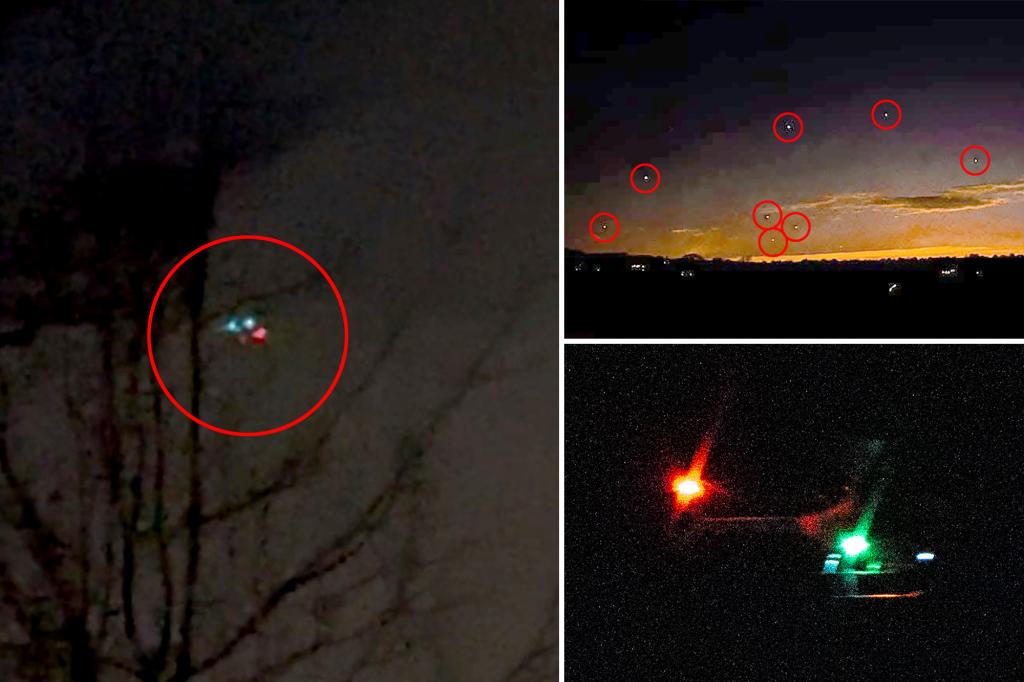The Federal Bureau of Investigation (FBI), in conjunction with the New Jersey State Police, has issued a public safety warning regarding the increasing incidents of pilots being targeted by lasers from individuals mistakenly identifying manned aircraft as drones. This alarming trend stems from a surge in reported drone sightings over New Jersey, leading to heightened public concern and prompting numerous calls to a federal tip line established specifically for drone activity. However, investigations have revealed that a significant portion of these reported sightings are misidentifications, involving various aircraft, celestial bodies, and even authorized drone operations. This misidentification has created a hazardous environment for pilots, as individuals attempting to deter perceived drone activity are inadvertently endangering manned aircraft and their occupants.
The FBI’s warning emphasizes the potential for “dangerous and possibly deadly consequences” arising from the misidentification of manned aircraft as drones. The primary concern is the use of lasers to target these aircraft. While individuals may believe they are deterring or disabling a drone, the reality is that they are directing powerful laser beams towards pilots of planes and helicopters, causing temporary blindness and potentially leading to catastrophic accidents. The disorientation and visual impairment caused by laser strikes can severely compromise a pilot’s ability to control the aircraft, especially during critical phases of flight such as takeoff and landing. This risk is further compounded by the possibility of individuals resorting to more drastic measures, such as firearms, to eliminate what they perceive as a drone threat.
The escalating anxiety surrounding drone activity in New Jersey has been fueled by thousands of reports flooding the federal tip line. However, the FBI has clarified that a vast majority of these reports, over 5,000, lacked sufficient evidence to warrant further investigation. Only a small fraction, less than 100, were deemed credible enough to pursue. This discrepancy highlights the widespread misidentification of various objects as drones, underscoring the importance of public education and awareness regarding drone technology and aircraft identification. The reports encompass a range of misidentified objects, including legitimate commercial and hobbyist drones, law enforcement drones conducting authorized operations, conventional fixed-wing aircraft, helicopters, and even astronomical phenomena such as stars.
White House spokesman John Kirby addressed the issue, confirming the diverse nature of the reported sightings. He acknowledged the presence of legitimate drone operations, both commercial and recreational, alongside the operations of law enforcement agencies. He further emphasized the significant number of misidentifications, which included manned aircraft and celestial objects being mistaken for drones. This clarification underscores the need for caution and responsible reporting when observing aerial activity. The misidentification of manned aircraft as drones not only poses a direct threat to pilots and passengers but also diverts valuable resources from legitimate investigations into actual drone-related concerns.
The FBI’s warning serves as a critical reminder of the potential dangers associated with misidentifying aircraft and the importance of refraining from taking matters into one’s own hands. Individuals who observe suspicious aerial activity should report their observations to the appropriate authorities, providing as much detail as possible, rather than attempting to intervene directly. Utilizing lasers or other potentially harmful methods to target perceived drones can have severe legal and safety ramifications, especially when the targeted object is a manned aircraft. Public awareness and education regarding drone technology, aircraft identification, and proper reporting procedures are crucial to mitigating the risks associated with this growing concern.
The situation in New Jersey highlights the broader challenges associated with integrating drone technology into the airspace. As drone usage increases, both for legitimate purposes and potentially malicious activities, the risk of misidentification and inappropriate responses also rises. This necessitates a multi-faceted approach involving public education, improved reporting mechanisms, and clearer guidelines for drone operation and enforcement. The incident underscores the need for collaboration between government agencies, law enforcement, the aviation industry, and the public to ensure the safe and responsible integration of drones into the national airspace while safeguarding the safety of manned aircraft and their occupants. The ongoing investigation into the New Jersey drone sightings serves as a valuable case study for addressing the complex challenges associated with drone technology and its impact on aviation safety.

